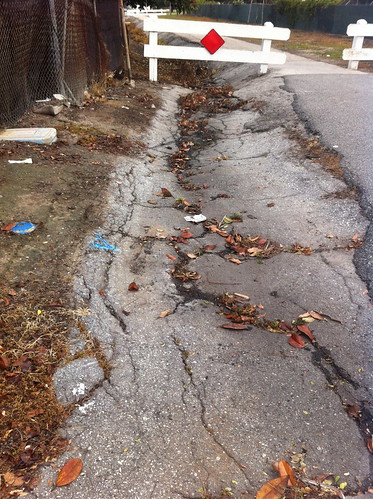This post is part of a series of posts I am creating about finding nature and beauty in the town where I grew up. For more background info, see the first post in the series.
The ability of life to survive and thrive in harsh environments is stunning and incredible. Many offer examples of 'extreme' environments that teem with life, such as deserts and the Arctic. Instead, I offer a place that is in many ways even harsher - and that has given life much less time to adapt to it - and still supports an ecosystem struggling to survive.
View Larger Map
The map above could be a scene from many places in coastal California. The white shrub is almost certainly a flowering coyote brush plant. Around it is a disturbed landscape, but certainly not a heavily-manicured suburban expanse.
Now, please begin zooming out using the map above. As you do so, take note of natural features you see.
Showing posts with label urban nature. Show all posts
Showing posts with label urban nature. Show all posts
Monday, February 13, 2012
Wednesday, February 1, 2012
In The Darkest Places: Life in a Torrance Ditch
For most of the last week, I have been visiting family and friends in Torrance, a suburb of Los Angeles and the place I grew up.
I have a love-hate relationship with California, but my feelings about Torrance have always been more straightforward - there are some people there who are incredibly important to me, but Torrance itself I have always hated.
There isn't much gained in hating a place though, especially one I will end up visiting again, so during this visit I decided to "get curious", as one person has advised me; to try to understand WHY Torrance is how it is, how its past influences it, what wild plants and free water are hiding in the cracks and forgotten places of the present, and what is possible in the future. During my latest trip I found several interesting things, which I'll be writing about in a mini-series of blog posts called "In The Darkest Places"
Tuesday, June 28, 2011
Eau Lente à Montréal, Québec (Slow Water in Montreal, Quebec)
(Note that I used Google Translator for the title, if it looks wrong, let me know and I'll fix it).
I've been spending quite a bit of time in Quebec lately. Last weekend I was in Montreal for the Jazz Fest, but of course I was looking around at urban water features as well.
Thursday, December 30, 2010
A Lake Explore; Citizen Science using Project Noah App
Between the subzero wind chills of Vermont winter and a big project deadline, I'd been spending far too much time inside in the past few weeks. With the deadline passed and an early winter thaw building in, it was time to get outside. I decided to take a walk on the shores of Lake Champlain. In addition to getting outside, I wanted to take advantage of the 'balmy' 33 degree air to try out Project Noah, a citizen science app for the Iphone.
The air temperature has been below freezing for most of December, but Lake Champlain is large and deep, and the wide portion of the lake near Burlington, Vermont has not frozen over. The splashing waves deposit ice on everything near the lake, including branches, rocks, and even fences.

Click below to take a virtual tour of my walk, using Project Noah.
The air temperature has been below freezing for most of December, but Lake Champlain is large and deep, and the wide portion of the lake near Burlington, Vermont has not frozen over. The splashing waves deposit ice on everything near the lake, including branches, rocks, and even fences.

Click below to take a virtual tour of my walk, using Project Noah.
Subscribe to:
Posts (Atom)


